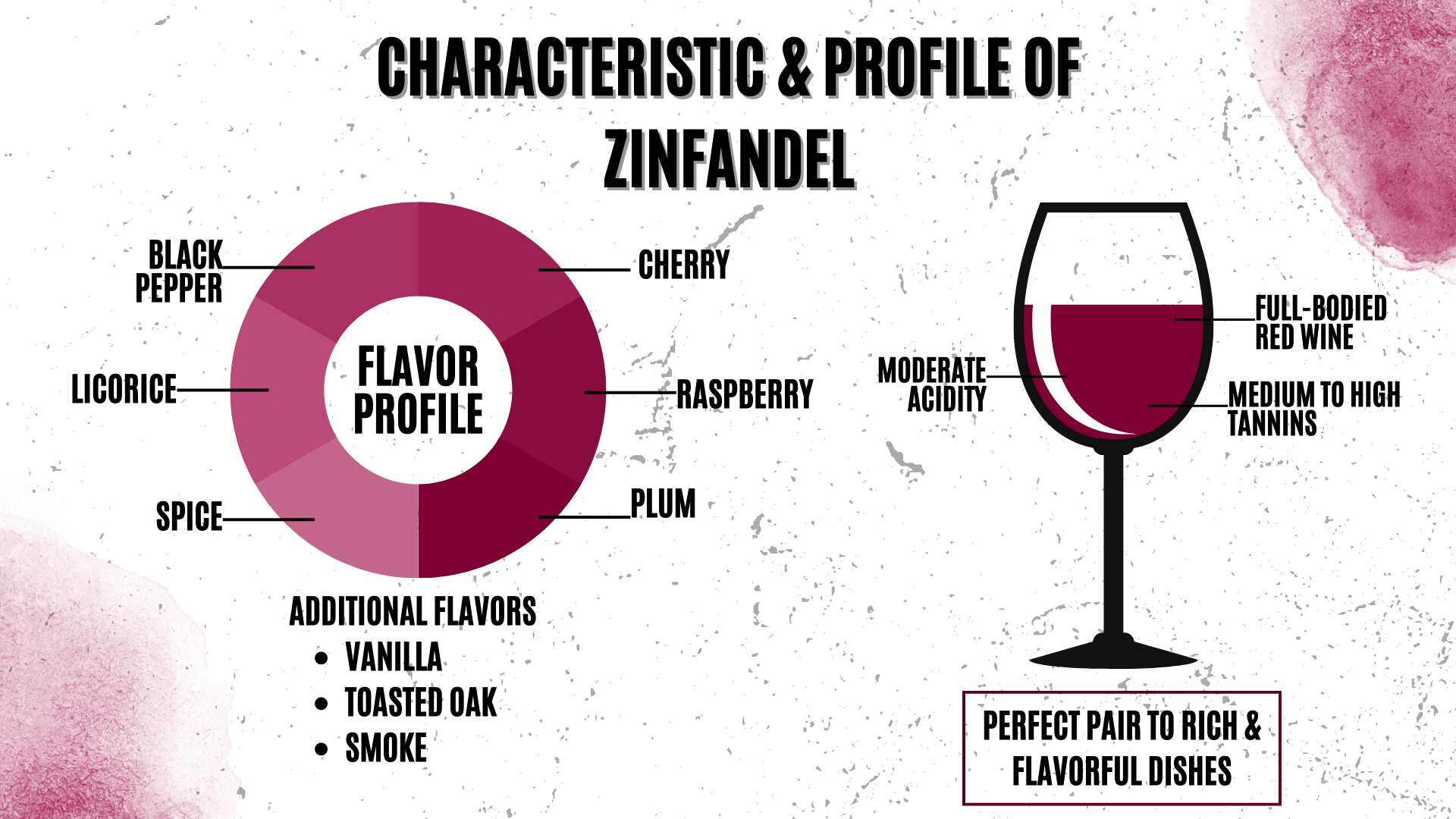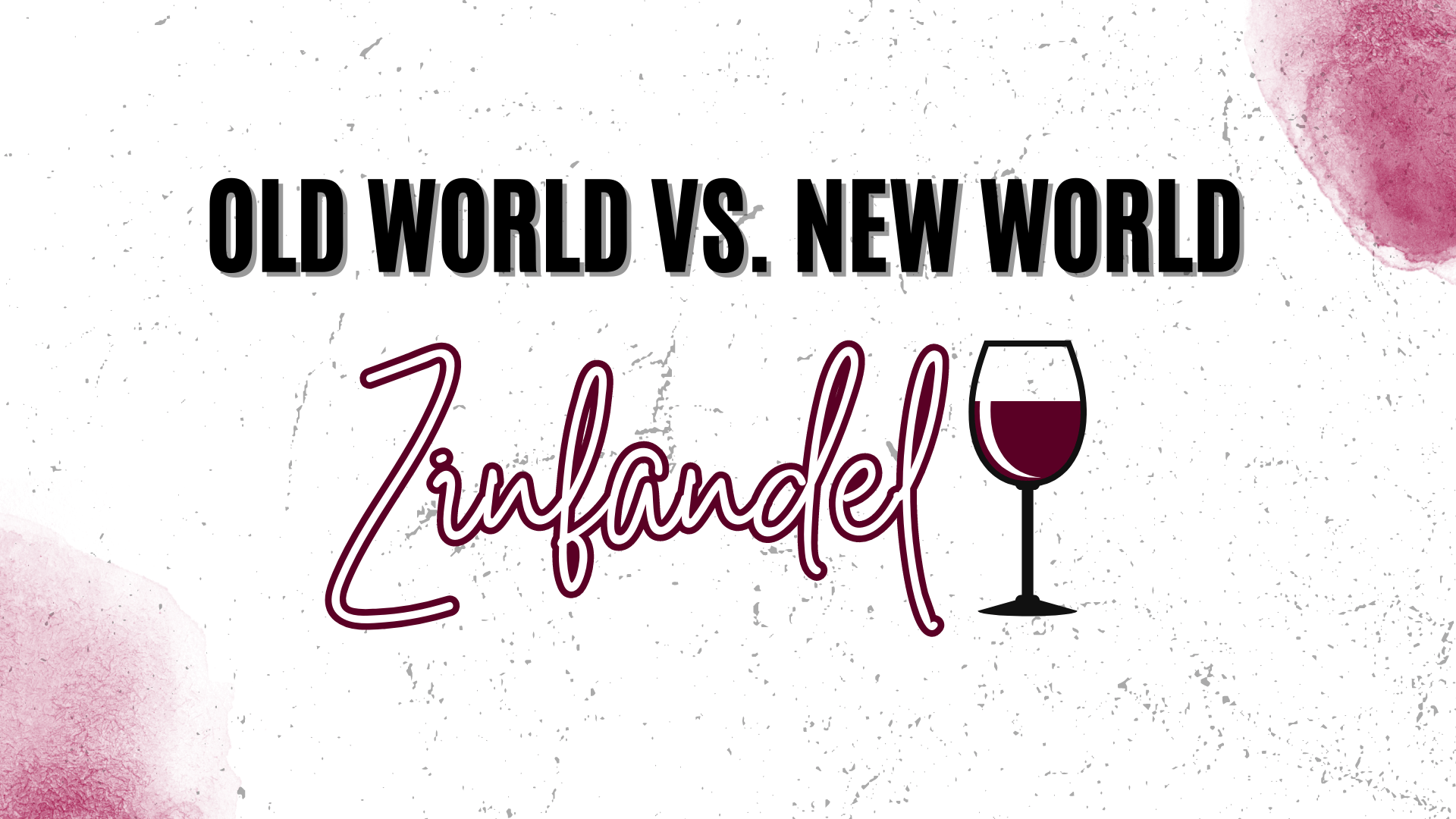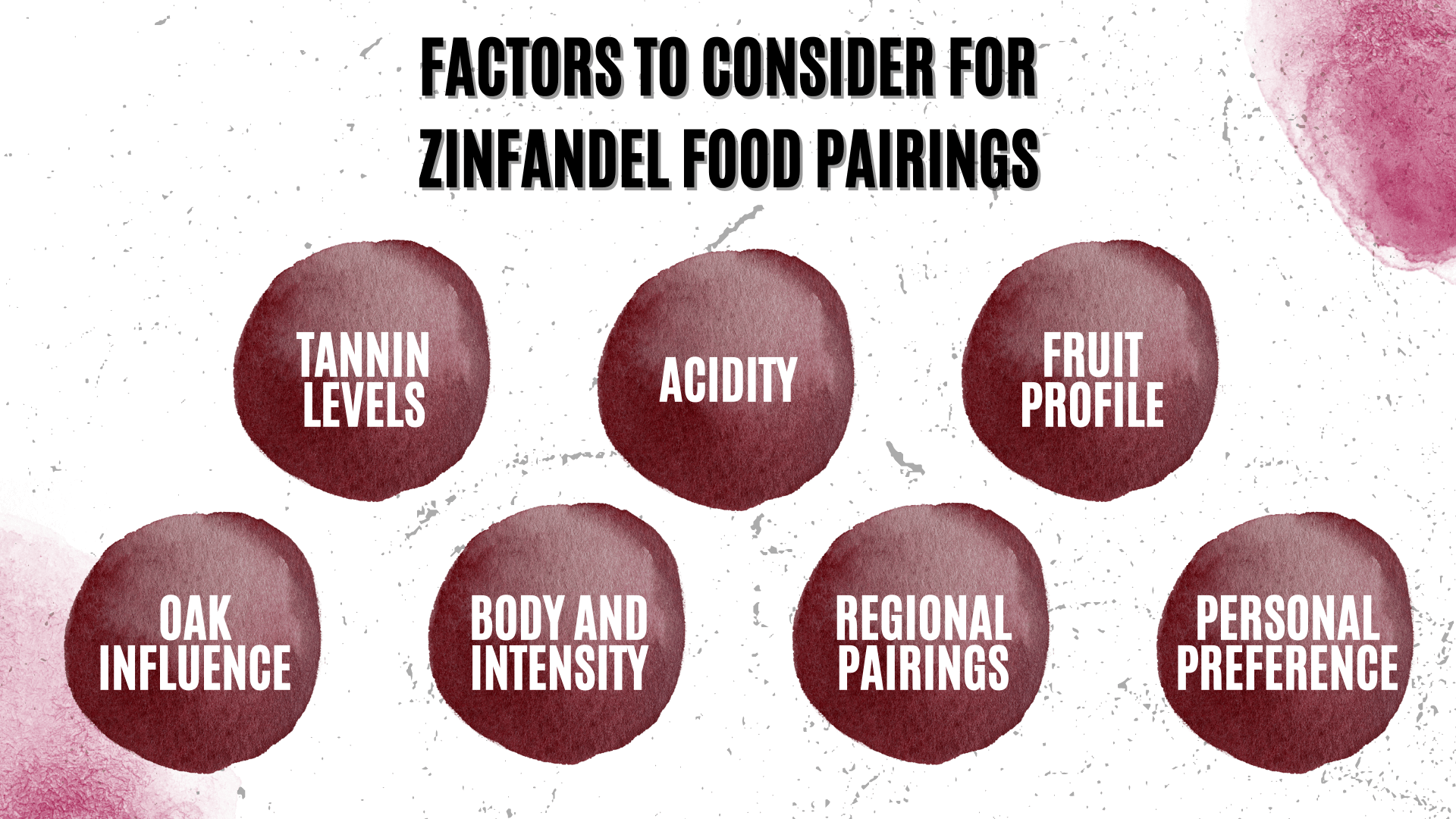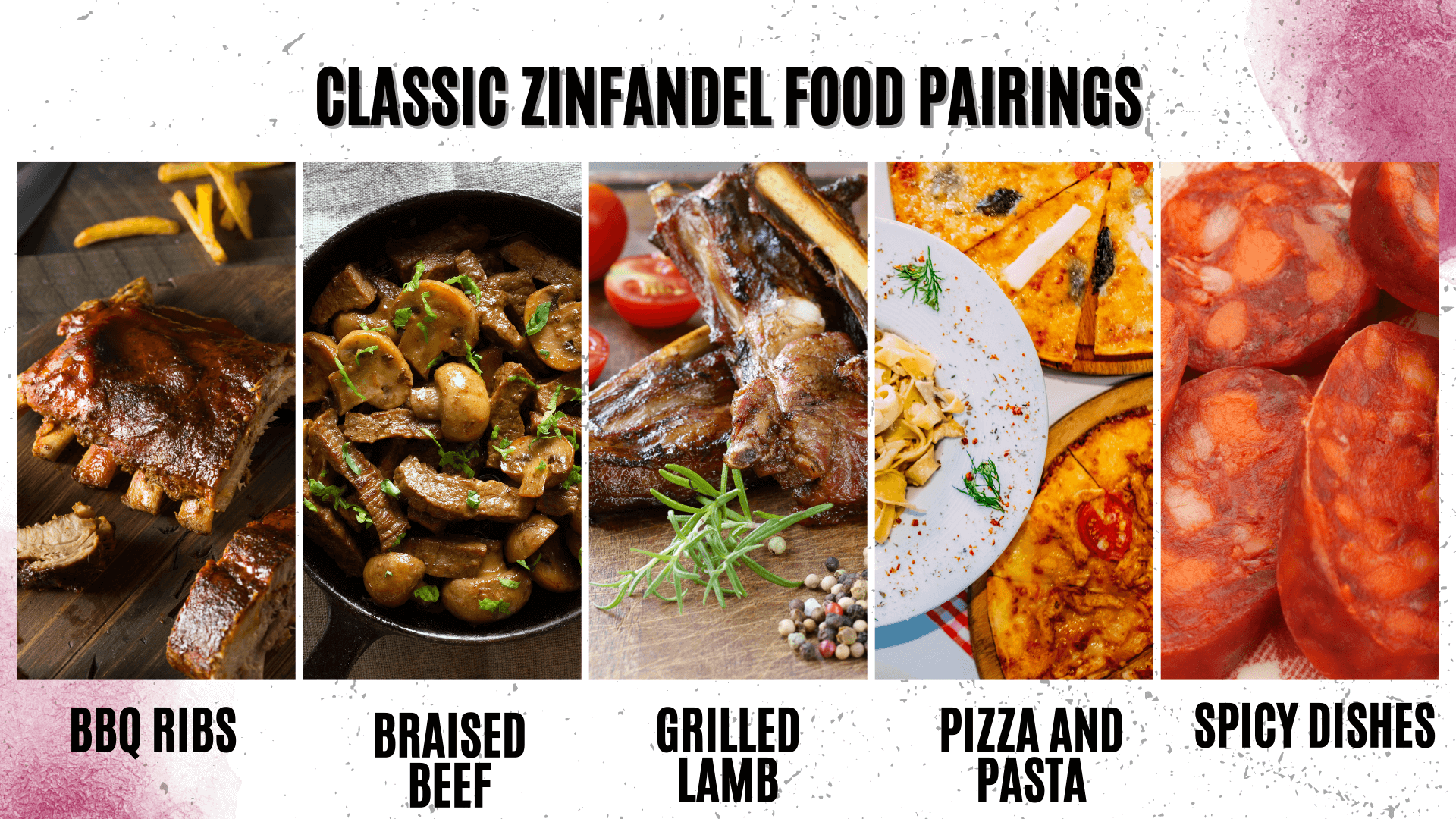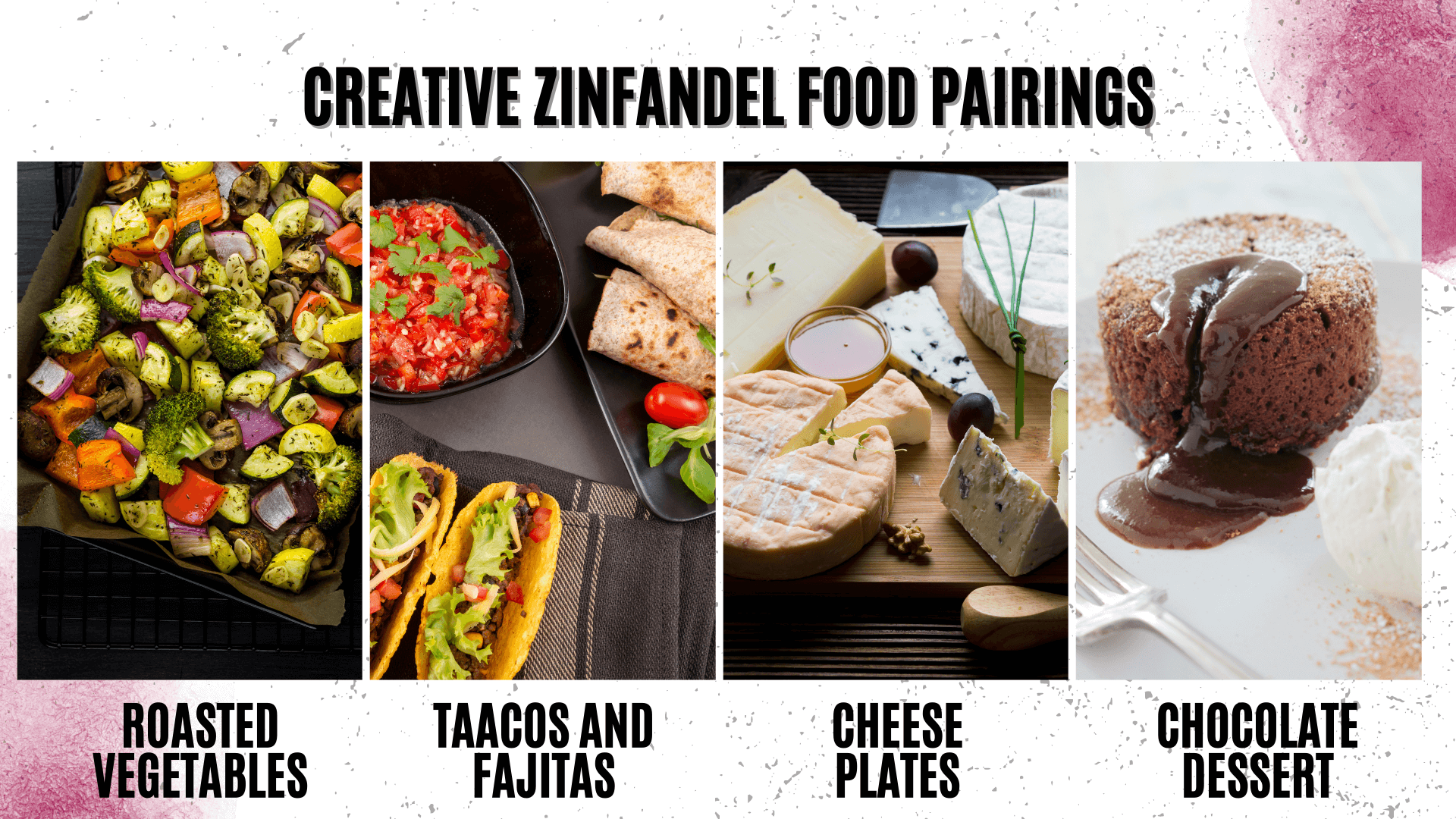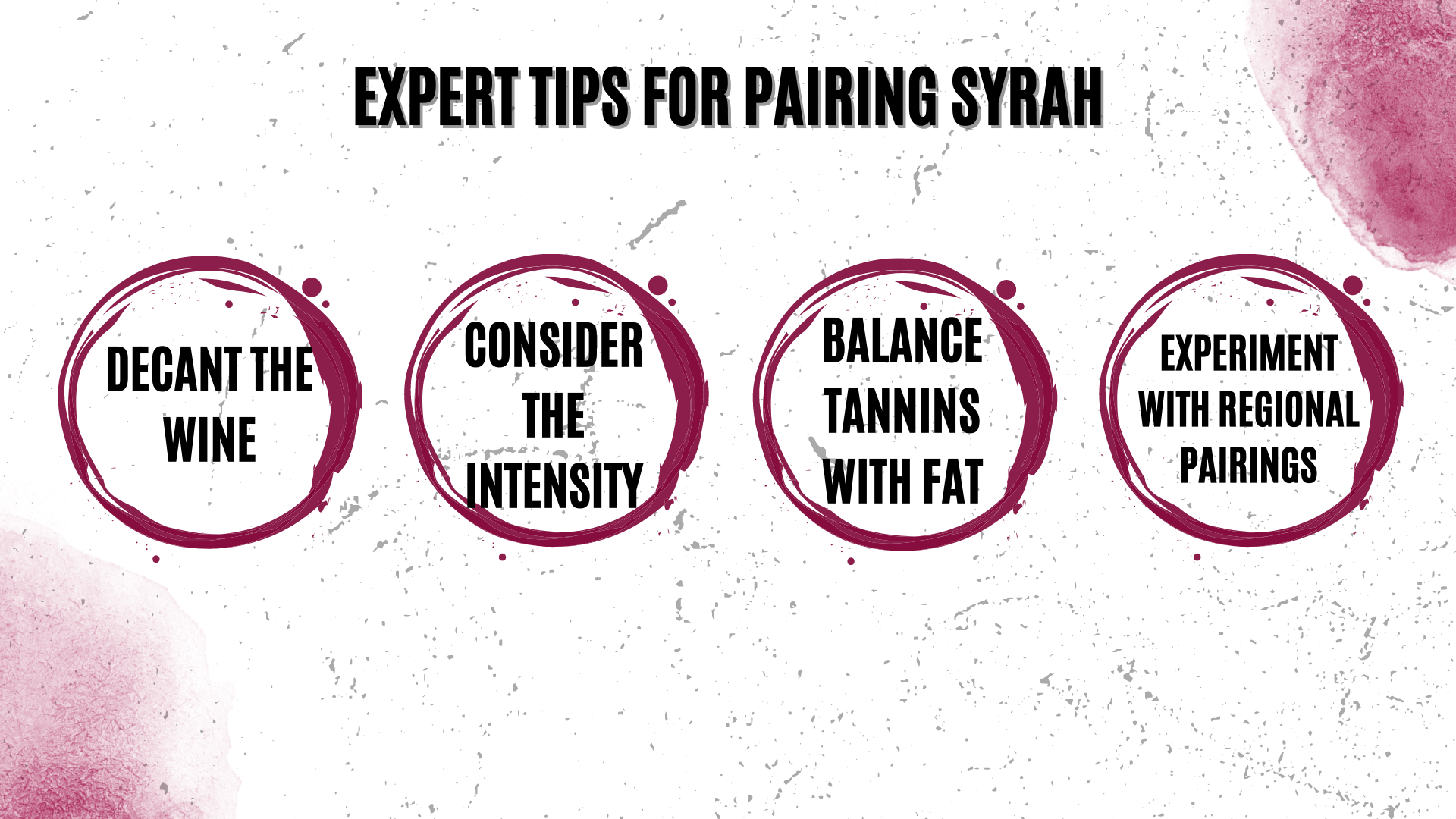Introduction
Zinfandel, a red grape variety with a rich history and a unique flavor profile, is known for its bold and fruity characteristics. It is mainly grown in California, where it has become a signature wine. Zinfandel’s versatility makes it an excellent option for pairing with a wide range of dishes, from hearty meats to spicy and savory fare. In this comprehensive guide, we’ll explore the history, characteristics, and various styles of Zinfandel, as well as share expert tips and pairing suggestions for the perfect dining experience.

I. The History of Zinfandel
Zinfandel’s origins can be traced back to Croatia, where it is known as Crljenak Kaštelanski. The grape variety was brought to the United States in the 19th century and became particularly popular in California, where it has thrived ever since.
II. Wine Profile
Zinfandel is a full-bodied red wine with moderate acidity and medium to high tannin levels. Its flavor profile typically includes ripe red and black fruit flavors, such as black cherry, raspberry, and plum, along with secondary notes of black pepper, licorice, and spice. The wine often undergoes oak aging, which imparts additional flavors of vanilla, toasted oak, and smoke.
III. Characteristics of Zinfandel
Zinfandel is known for its deep, dark color and bold, concentrated flavors. Common tasting notes include black cherry, raspberry, and plum, often accompanied by hints of black pepper, licorice, and spice. The wine’s moderate acidity and medium to high tannin content provide structure and balance, making it an excellent choice for pairing with a variety of foods.
IV. Old World vs. New World Zinfandel
Old World Zinfandels, such as those from Croatia and Italy (where it is known as Primitivo), tend to be more rustic and earthy, with leaner fruit profiles and higher acidity. New World Zinfandels, particularly those from California, are characterized by riper fruit flavors, higher alcohol content, and a more opulent texture.
V. Factors to Consider for Zinfandel Food Pairings
Tannin levels: Zinfandel’s tannins can range from medium to high, making it suitable for pairing with a variety of dishes, from lighter meats to hearty, robust fare.
Acidity: Zinfandel has moderate acidity, allowing it to balance the flavors of various dishes, including those with their own acidity, such as tomato-based meals.
Fruit profile: Zinfandel’s fruit flavors can range from ripe red fruits like raspberries and cherries to darker fruits like blackberries and plums. Consider the wine’s fruit profile when selecting a dish, opting for complementary flavors or contrasts that will enhance the pairing.
Oak influence: Many Zinfandels are aged in oak barrels, which can impart flavors of vanilla, spice, and smoke. Consider dishes that will complement or contrast these flavors, like grilled or smoked meats or dishes with earthy or spicy components.
Body and intensity: Zinfandel is typically a full-bodied and intense wine, which means it can easily overpower delicate dishes. Choose robust, flavorful dishes that can stand up to the wine’s intensity.
Regional pairings: Pairing a wine with food from the same region can often yield successful results, as the flavors and culinary traditions have evolved together. For example, a California Zinfandel might pair well with a dish that highlights local ingredients and flavors.
Personal preference: Ultimately, the most important factor in any wine pairing is your own taste. Experiment with different combinations and trust your palate to guide you in creating enjoyable Zinfandel food pairings.
VI. Classic Zinfandel Food Pairings
BBQ Ribs: Smoky, saucy BBQ ribs are a classic pairing for Zinfandel. The wine’s bold fruit flavors and peppery notes complement the sweet and savory flavors of the barbecue sauce, while its tannins help cut through the richness of the meat.
Braised beef: Slow-cooked, tender braised beef dishes work exceptionally well with Zinfandel. The wine’s fruit and spice notes enhance the rich, savory flavors of the meat, creating a harmonious pairing.
Grilled lamb: Zinfandel’s bold fruit flavors and spice notes make it a natural partner for grilled lamb dishes, whether it’s chops or a leg of lamb. The wine’s tannins and acidity balance the gamey, rich flavors of the meat.
Pizza and pasta: Zinfandel’s moderate acidity and bold fruit flavors make it an excellent choice for pairing with tomato-based pizza and pasta dishes. The wine’s fruit and spice components complement the acidity and flavors of the sauce, creating a balanced and satisfying pairing.
Spicy dishes: Zinfandel’s ripe fruit flavors and peppery notes can handle the heat of spicy dishes, such as curries, chili, or spicy sausages. The wine’s bold character stands up to the spice without being overwhelmed.
VII. Creative Zinfandel Food Pairings
Roasted vegetables: Earthy, roasted vegetables like root vegetables, squash, or mushrooms can be a delicious match for Zinfandel. The wine’s bold flavors can complement the caramelized, earthy notes of the vegetables, creating a satisfying and flavorful pairing.
Tacos and fajitas: Spice up your taco or fajita night by pairing your meal with Zinfandel. The wine’s fruit and spice notes work well with the bold flavors of the meat and seasonings, creating a festive and delicious combination.
Cheese plates: Zinfandel’s bold flavors can stand up to a variety of cheeses, from aged cheddar to creamy blue cheese. The wine’s fruit and spice components can complement or contrast the flavors and textures of the cheese, making for an enjoyable and diverse pairing experience.
Chocolate desserts: While unconventional, pairing Zinfandel with chocolate desserts like a rich chocolate cake or brownies can be a delightful indulgence. The wine’s ripe fruit flavors can harmonize with the chocolate’s sweetness, creating a luxurious and decadent pairing.
VIII. Expert Tips for Pairing Zinfandel
Decant Zinfandel to allow the wine to breathe and open up, enhancing its flavors and softening the tannins.
Consider the intensity: When pairing Zinfandel with food, it’s crucial to match the intensity of the wine with the intensity of the dish. Bold, flavorful dishes work best with this full-bodied wine, as they can stand up to its strong flavors without being overwhelmed.
Balance tannins with fat: Zinfandel’s tannins can be softened by dishes with high fat content, such as red meat, rich sauces, or creamy cheeses. This helps create a harmonious balance between the wine and the food.
Spice it up: Zinfandel’s dark fruit flavors and peppery notes can complement spicy dishes, such as grilled meats with spicy rubs or sauces. The wine’s bold flavor profile can handle the heat and provide a pleasant counterbalance.
Experiment with regional pairings: When in doubt, consider pairing Zinfandel with dishes from regions where the wine is produced, such as California. Regional pairings often share complementary flavors and can lead to successful matches.
Conclusion
Zinfandel’s bold flavors, full body, and moderate acidity make it a versatile wine for food pairings. From classic barbecue dishes to more adventurous pairings with spicy foods and rich desserts, the possibilities are nearly endless. By understanding the characteristics and styles of Zinfandel, as well as following expert tips, you can elevate your dining experience and create unforgettable pairings that showcase this unique wine.
Frequently Asked Questions
While Zinfandel is generally considered a full-bodied wine, there is some variation depending on factors such as region, climate, and winemaking techniques. However, most Zinfandels will have a full-bodied character.
Although Zinfandel is not a traditional pairing for seafood, there are exceptions. For example, a rich, flavorful dish like grilled tuna or shrimp in a spicy tomato sauce may hold up well against the bold flavors of Zinfandel.
Zinfandel is best enjoyed at a slightly cooler temperature than room temperature, typically around 60-65°F (16-18°C). This allows the wine’s flavors and aromas to shine without being overwhelmed by the alcohol content.
Once opened, a bottle of Zinfandel can be stored for up to 3-5 days if properly resealed and kept in a cool, dark place. Using a vacuum-sealed wine preservation system can extend the wine’s life by a few more days.
Red Zinfandel is a bold, full-bodied red wine made from the Zinfandel grape, while White Zinfandel is a blush or rosé wine that is made from the same grape but has limited contact with the grape skins during the winemaking process. This results in a lighter, sweeter, and less intense wine compared to the red version.



